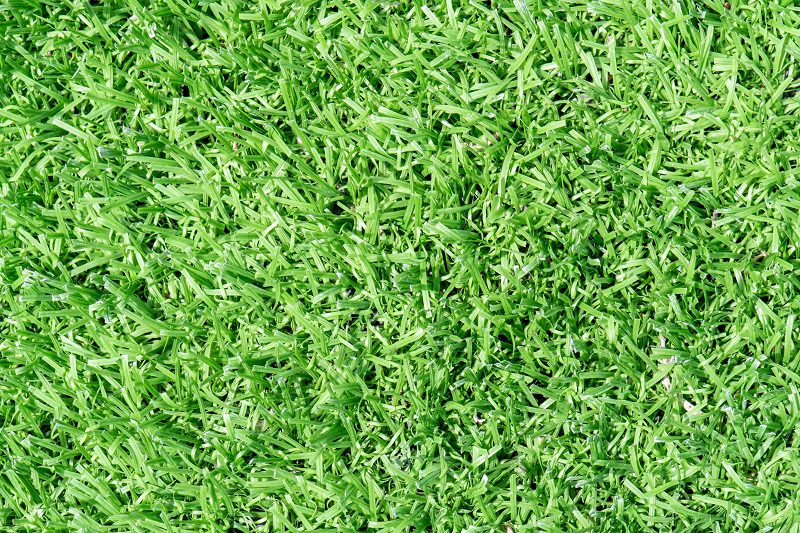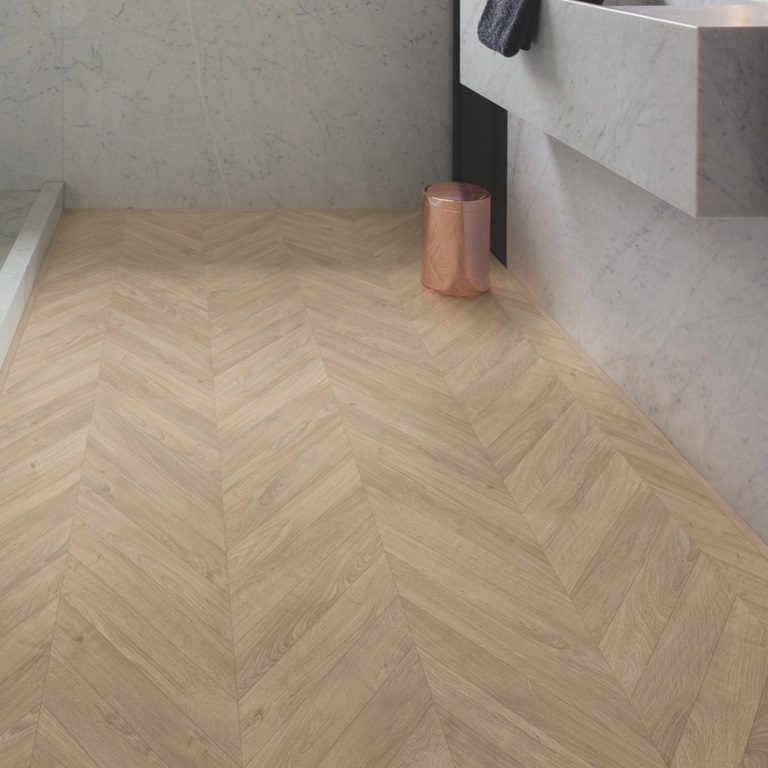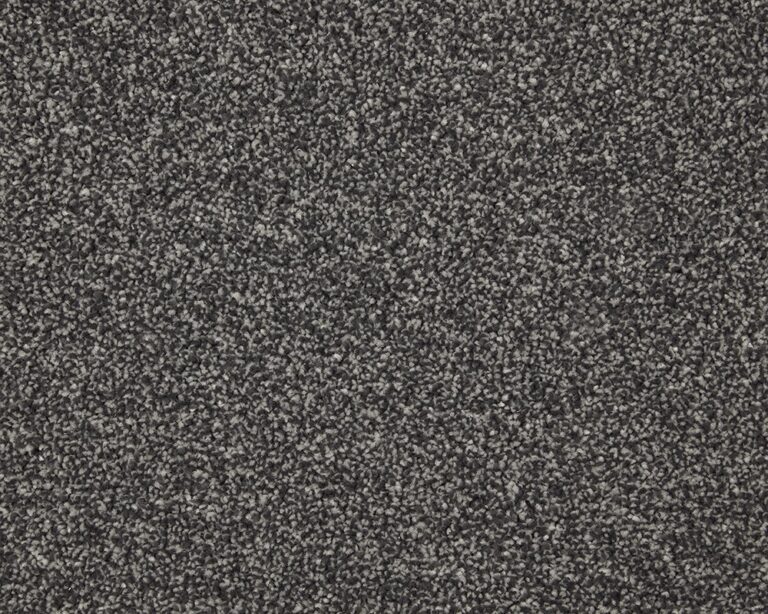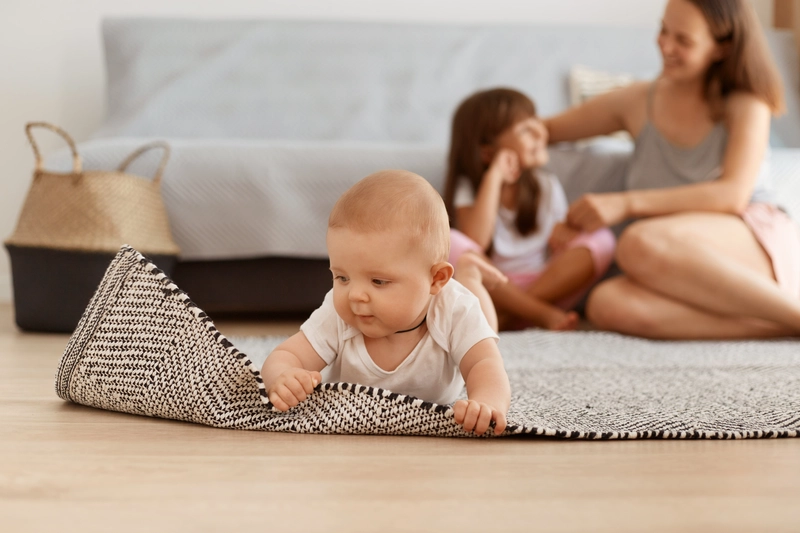Are you considering switching to artificial grass for your outdoor space but not sure where to start? We explore what artificial grass is and why it is a popular choice for many homeowners. We also provide a step-by-step guide for artificial grass preparation, along with a list of necessary tools and materials for its installation.
If you want to enjoy a low-maintenance, durable, and cost-effective alternative to natural grass, keep reading!
What Is Artificial Grass?
Artificial grass, also known as synthetic turf, is a surface made from synthetic fibres that mimic the look and feel of natural grass. It is commonly used in landscaping and sports applications.
One of the key characteristics of artificial grass is its low maintenance requirements, making it an attractive option for those looking to have a lush green lawn without the hassle of regular upkeep. Unlike natural grass, synthetic turf does not require watering, mowing, or fertilising, saving both time and resources.
Artificial grass is highly durable and weather-resistant, able to withstand heavy foot traffic and varying weather conditions without losing its vibrant appearance. This durability makes it an ideal choice for high-traffic areas such as sports fields or playgrounds.
Regarding installation, artificial grass can be laid on various surfaces, including soil, concrete, or decking, providing versatile options for transforming any outdoor space into a green oasis. Its versatility, durability, and low maintenance requirements have made artificial grass a popular choice for residential gardens, commercial properties, and recreational areas.

See Product: Artificial Grass – Summer Days Bloom
Reason to Choose Artificial Grass
Choosing artificial grass for your outdoor spaces offers numerous benefits, including low maintenance, durability, and environmental friendliness while being a cost-effective alternative to natural grass.
One of the key advantages of selecting artificial grass is its excellent drainage system, which helps in avoiding waterlogging issues commonly faced with natural grass. Artificial grass eliminates the need for harmful pesticides, reducing the growth of weeds and promoting a safer environment for children and pets to play. The installation of a proper sub-base beneath the artificial turf ensures long-lasting results and a smooth, even surface for years to come. The aesthetic appeal of artificial grass remains consistent throughout the year, providing a lush green look without the hassles of constant watering or mowing.
a. Low Maintenance
One of the primary reasons to opt for artificial grass is its low maintenance requirements, as it eliminates the need for mowing, watering, and fertilising, saving time and resources.
Artificial grass offers a hassle-free solution for homeowners and businesses, as it does not require the regular upkeep that natural grass demands. With artificial turf, there is no need for expensive lawn tools such as lawnmowers and trimmers, cutting down on maintenance costs substantially.
The use of topsoil or bender board is minimal or unnecessary with artificial grass, as it retains its shape and appearance without the need for additional support or amendments. This durable landscaping option provides a long-lasting solution that remains lush and vibrant throughout the year.
b. Durable and Long-lasting
Artificial grass is known for its durability and longevity, maintaining its lush green appearance even in high-traffic areas, thanks to its sturdy construction and seamless joints.
Artificial grass is resilient against various factors that typically wear and tear natural grass, making it an ideal choice for outdoor surfaces. Its sturdy construction allows it to withstand heavy foot traffic without losing its aesthetic appeal. Artificial grass is designed to resist UV exposure, ensuring that it remains vibrant and green even under the sun’s harsh rays. The innovative materials used in its production create a protective barrier, making it highly resistant to changing weather conditions.
c. Environmentally Friendly
Artificial grass offers an environmentally friendly landscaping solution by reducing water consumption, eliminating the need for harmful pesticides, and providing a sustainable alternative to natural grass.
This synthetic turf significantly reduces the demand for water, making it an ideal choice for regions facing drought conditions. By not needing constant watering to stay lush and green, synthetic lawns promote water conservation. The absence of pesticides and fertilisers in artificial grass upkeep diminishes chemical runoff into the soil, contributing to a healthier ecosystem. The innovative design of artificial grass with its sand base layer not only enhances drainage and durability but also minimises the use of harmful chemicals. All these factors combined make artificial grass a commendable choice for sustainable landscaping practices.
d. Cost-effective
Choosing artificial grass can be a cost-effective investment in the long term, as it reduces maintenance expenses, water bills, and the need for constant lawn care products, providing a budget-friendly landscaping option.
One significant advantage contributing to the cost-effectiveness of artificial grass is its long-term savings potential. Unlike natural grass which requires frequent mowing, watering, fertilising, and pest control, artificial turf demands minimal upkeep, cutting down on ongoing maintenance costs.
Another key aspect that adds to its economic advantages is the reduced water usage. Natural grass often consumes significant amounts of water, especially in dry regions, leading to high water bills. In contrast, artificial grass requires minimal to no watering, contributing to substantial savings over time.
An additional point to consider is the preparatory steps required before laying artificial grass. Proper ground preparation is crucial to ensure the longevity and performance of the artificial turf. This typically involves removing existing grass, levelling the ground, and compacting the soil to create a stable base for the synthetic turf installation. Learn more about artificial grass installation cost.
Steps for Artificial Grass Preparation
How to prepare for artificial grass? Before installing artificial grass, proper preparation of the ground is essential to ensure a stable and long-lasting synthetic lawn.
So, how to prepare the ground for artificial grass? Actually, this involves several key steps that need to be followed meticulously.
1. Measure and Prepare the Area
One of preparations before laying artificial grass is to measure and prepare the designated area using tools like a measuring tape and spade to ensure accurate sizing and proper groundwork.
Plus measuring the area, it’s crucial to use a turf cutter to remove any existing grass, weeds, or debris. This step ensures a clean base for the artificial turf to be laid upon. Precise measurements help in minimising wastage and ensuring a seamless installation process.
Preparing the ground properly by levelling the surface and compacting the soil is vital for the longevity and stability of the artificial grass. Paying attention to details such as joints where different sections of turf meet guarantees a smooth and professional finish.
2. Remove Existing Grass and Debris
Clearing the area of existing grass, weeds, and debris is crucial before laying down artificial grass to ensure a smooth and even surface for installation.
Creating a clean foundation not only promotes better turf installation but also prevents potential unevenness that may affect the overall look and feel of the synthetic lawn.
- By removing vegetation and debris.
- It allows for proper topsoil placement and levelling.
- Ensuring optimal drainage and stability for the artificial turf.
Using a weed barrier fabric beneath the turf helps to inhibit weed growth and maintain the aesthetics of the artificial lawn over time.
3. Level and Compact the Ground
After clearing the area, the ground needs to be levelled and compacted to create a stable base for the artificial grass, ensuring proper drainage and a uniform surface.
Levelling the ground involves removing any existing debris, rocks, or vegetation, followed by the use of a bender board to define the area’s perimeter.
Next, a sub-base material such as crushed rock or decomposed granite is spread evenly and compacted to create a solid foundation.
Proper compaction is crucial to prevent uneven settling and ensure the longevity of the artificial grass. This can be achieved through the use of a compactor machine that applies pressure evenly across the surface, enhancing stability.
4. Install a Weed Barrier
Installing a weed barrier fabric is essential to prevent weed growth and ensure the longevity of the artificial grass by providing a protective layer against unwanted vegetation.
One of the key benefits of using a weed barrier in artificial grass installation is its effectiveness in weed prevention. By blocking out sunlight and depriving weeds of the nutrients they need to grow, the barrier helps maintain a pristine lawn appearance without the need for constant weeding.
The fabric serves as a shield, protecting the underlying soil from erosion and maintaining proper drainage patterns, which are crucial for the health of the turf. It acts as a barrier against invasive roots, preventing them from penetrating the artificial grass surface and causing damage.
5. Lay Down a Base Layer
The base layer serves as the foundation for the artificial grass, providing stability, drainage, and support for the synthetic turf to ensure a long-lasting and well-maintained surface.
Properly preparing the base layer is crucial in artificial grass installations as it plays a key role in distributing the load evenly across the surface. A well-constructed base helps in preventing uneven settling or shifting of the synthetic turf over time.
The base layer also aids in absorbing impact, especially in high-traffic areas, reducing wear and tear on the artificial grass. This impact absorption capability contributes significantly to the overall durability of the installation.
The base layer is designed to facilitate efficient water drainage, preventing waterlogging that can lead to mould growth or damage to the substructure. This drainage function ensures proper maintenance of the artificial turf and prolongs its lifespan.
6. Add a Layer of Sand
What to lay before artificial grass? Applying a layer of sand on top of the base layer helps in stabilising the artificial grass, enhancing its appearance, and providing additional support for a flat and uniform surface.
The sand infill plays a crucial role in securing the synthetic lawn at the joints, preventing any shifts or movements that could lead to unevenness. The sand also aids in maintaining the pile height and structure of the artificial grass, ensuring a plush and natural look. It contributes to the overall aesthetics by helping the fibres stand upright and creating a more realistic appearance.
7. Install the Artificial Grass
The process of installing artificial grass involves carefully laying down the turf over the prepared base, ensuring proper alignment, trimming, and securing to achieve a seamless and professional finish.
Proper alignment is crucial in creating a visually appealing and uniform look for the artificial grass surface. To achieve this, one must use measuring tools such as a tape measure to ensure the grass rolls are placed parallel to each other with no gaps in between.
Regarding trimming, a sharp utility knife or heavy-duty scissors are essential for cutting the artificial turf precisely along edges or around obstacles. This step helps in achieving a clean and tailored appearance for the grass.
Secure fixing methods play a key role in the longevity of the artificial grass installation. Utilising seaming tape and adhesive to join different sections of the turf together ensures a seamless and durable bond.
8. Secure the Edges and Seams
Securing the edges and seams of the artificial grass is crucial to prevent shifting, ensure a seamless appearance, and enhance the overall durability and longevity of the synthetic turf.
One of the key aspects of ensuring a successful artificial grass installation is the proper application of adhesive, which plays a significant role in securing the edges and seams firmly in place. Using a high-quality adhesive can provide long-lasting bonding that withstands various weather conditions and foot traffic. Utilising a precision turf cutter is essential for achieving clean and precise edges, ensuring a professional finish. Seam joining techniques such as using seam tape and adhesive can further reinforce the connections, creating a seamless look across the entire surface.
Tools and Materials that You Need for Artificial Grass Preparation
What preparation is needed for artificial grass? Preparing for artificial grass installation requires specific tools and materials to ensure a successful and professional outcome. Having the right equipment is crucial for a smooth process.
a. Measuring Tape
A measuring tape is a fundamental tool for accurately measuring the dimensions of the installation area, ensuring precise cutting and fitting of the artificial grass for a seamless finish.
The measuring tape plays a crucial role in determining the amount of artificial grass needed for the project. By measuring the length and width of the area accurately, you can calculate the exact square footage required, helping you avoid overordering or running short on materials.
Before laying artificial grass, accurate measurements are essential for planning the layout efficiently. Proper measurements ensure that the turf fits perfectly, minimising wastage and reducing the need for adjustments during the installation process.
b. Shovel
A spade is a versatile tool used for excavation, soil removal, and ground levelling during the preparation phase of artificial grass installation, essential for creating a smooth and even surface.
When laying artificial grass, the spade plays a crucial role in trenching to ensure the proper installation of drainage systems. This tool is particularly useful for digging precise trenches where pipes or irrigation systems need to be placed beneath the surface.
Regarding the base preparation, spades are handy for spreading and levelling sand evenly across the area. The ability to clear soil efficiently helps in maintaining the right depth and consistency throughout the project, ensuring a solid foundation for the synthetic turf.
c. Rake
A rake is a vital tool for levelling the ground, spreading materials evenly, and preparing the surface for artificial grass installation, ensuring a uniform and well-prepared base.
One of the key functions of a rake in artificial grass preparation is rubble removal. By raking the area before installation, you can clear away any stones, leaves, or branches that could affect the smoothness of the final surface.
A rake helps in smoothing the soil by evenly distributing topsoil or other necessary materials, ensuring an even and level base for the artificial turf.
Through the process of base compaction, using a rake can help in compacting and levelling the soil beneath, creating a sturdy foundation for the turf.
d. Weed Barrier Fabric
Weed barrier fabric is a critical material used to prevent weed growth, protect the base layer, and maintain the integrity of the artificial grass installation by providing a barrier against unwanted vegetation.
By serving as a protective shield, the weed barrier fabric facilitates a smoother and more enduring artificial grass surface. It aids in controlling weeds that would otherwise disrupt the evenness of the lawn and jeopardise its appearance. This fabric plays a key role in safeguarding the underlying soil, shielding it from the invasive roots of unwanted plants. Properly installed under the artificial turf, it acts as a foundation that not only prevents weed intrusion but also enhances the longevity of the entire installation.
e. Utility Knife
A utility knife is an essential tool for precise cutting, trimming, and shaping of the artificial grass during installation, ensuring clean edges and seamless seam connections.
Its versatility makes it essential for various tasks involved in artificial grass preparation.
From cutting the material to fitting it around obstacles or shaping precise edges, a utility knife proves handy in creating a polished finish.
When joining seams, the sharp blade ensures a seamless fusion of the artificial turf, providing a seamless look across the entire surface.
A utility knife aids in detailing work, allowing for intricate adjustments and modifications to enhance the overall appearance of the installation.
f. Adhesive or Tape
Adhesive or tape is used to secure the joints, seams, and edges of the artificial grass, ensuring a strong and reliable bond between the turf pieces for a professional and durable finish.
When installing artificial grass, using adhesive or tape plays a crucial role in maintaining the integrity of the surface. The adhesive helps in seam sealing, creating a seamless transition between different turf sections, and enhancing the overall appearance and functionality of the installation. Properly sealing the seams not only prevents fraying and lifting but also ensures a smooth and uniform surface.
g. Infill Material
Infill material is used to add weight, stability, and cushioning to the artificial grass surface, enhancing its resilience, appearance, and performance for a comfortable and realistic feel.
Regarding artificial grass installation, the infill material plays a crucial role in providing the necessary support and structure for the turf. Not only does it help in holding the blades upright, but it also aids in maintaining proper drainage by preventing water from accumulating on the surface.
The base layer is essential for the stability of the entire artificial grass system, and the right infill material ensures that the turf stays in place even during heavy foot traffic or adverse weather conditions, offering excellent impact absorption.
Choosing the appropriate infill can significantly enhance the overall aesthetics of the artificial grass, giving it a more natural look and feel. Using the correct tools for infill depth ensures optimal performance and longevity of the entire installation.
h. Lawn Roller
A lawn roller is a useful tool for compacting the base layer, settling the artificial grass fibres, and ensuring a smooth and even surface for the synthetic turf to maintain its shape and appearance.
When preparing the area for turf installation, using a lawn roller plays a significant role in enhancing the overall quality and longevity of the artificial grass. The roller effectively compresses the underlying sand or soil, providing a stable foundation for the turf. It helps in levelling out any uneven patches and removing air pockets that could cause the turf to shift or settle improperly.
That’s a complete explanation of artificial grass preparation you might need to know, including some materials and tools that may be required. If you are interested in bringing artificial grass to your home, you can directly contact TEKA Flooring to get the best quality artificial grass.
No need to worry about the preparation, because we also offer professional fitting service, and fine solutions for your flooring needs like installation for carpets, vinyl, or artificial grass. Don’t hesitate to contact our expert team!
Read also:

































